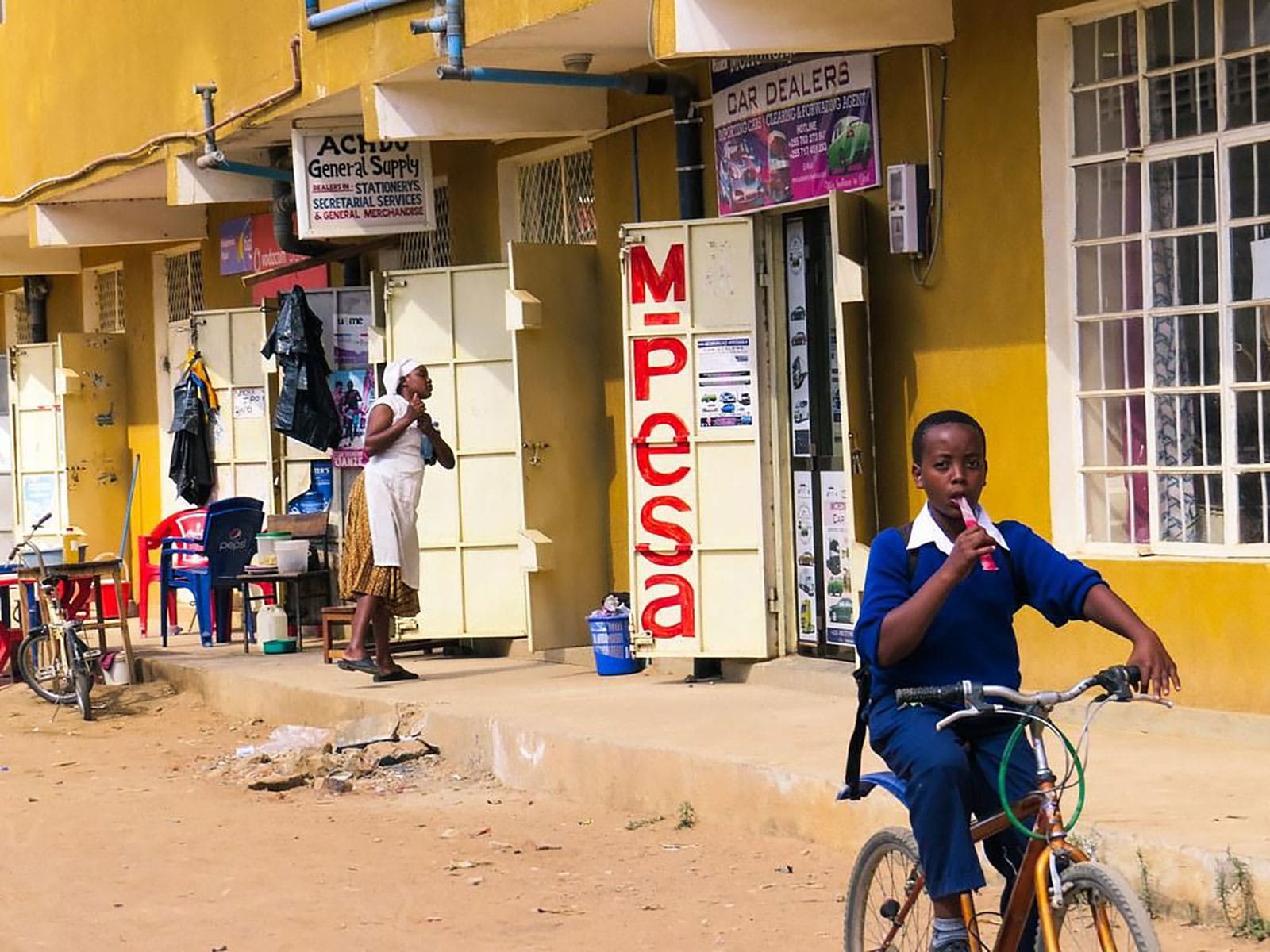Mobile phones are ubiquitous today, and not only in richer nations. Consumers in developing countries have embraced smartphones and flip phones, and these nations could very well be advancing their electronic communications infrastructures far faster than the West did, skipping the expensive and cumbersome landline telephone system entirely and going straight to wireless technologies. Urban and rural populations in Africa, Asia, and Latin America are voracious users of mobile devices. And increasingly, so are smallholder farmers.
Mobile phone companies have of course recognized this, and have partnered with other service providers to serve rural smallholder farmers, particularly with mobile financial solutions like the ability to spend money or send cash to relatives. Researchers have found that these applications improve smallholder productivity and profitability.
Kenya leads the way
In 2007, Safaricom and Vodafone launched the mobile finance service M-Pesa (the “m” stands for “mobile” while “pesa” is the Swahili word for “money”), which has become extremely popular and spread to other countries like Tanzania and Mozambique. Later, they launched a service specifically for farmers called DigiFarm, which had at least 1.2 million registered users as of 2019, the vast majority of them smallholders. As a 2020 United Nations report put it, DigiFarm offers Africa’s smallholder farms “a one-stop-shop to receive agronomic advice, weather information, input credit, send and receive remittances, and obtain agriculture insurance” (https://www.unsgsa.org/sites/default/files/resources-files/2020-09/Action_Paper_-_Sowing_the_seeds_of_innovation_for_smallholder_finance-compressed.pdf).
With success comes competition. Kenyan agribusiness giant ETG launched its own digital services platform called uLima to support some 250,000 smallholder farmers throughout the country, expanding into a wider array of financial services beginning in 2018 in partnership with other companies. MasterCard joined the fray with a pilot mobile e-money system designed for coffee farmers in Colombia. The credit card company also expanded into mobile money in Africa in 2017 with its MasterCard Farmer Network, which provides farmers with market information and a digital payments service.
Most of these initiatives give smallholder farmers the ability to buy inputs and sell crops using cell phones. They often provide market pricing information. And increasingly they allow even poor smallholders to purchase crop insurance to protect themselves in the event of severe weather or drought losses. They’re agricultural news and weather services, marketplaces, digital money tools, and online insurance providers all at the same time.
A digital boost to struggling farmers? The evidence starts to come in
But can these services improve the lives and finances of the smallholder farmers using them? Evidence is mounting that, yes, they can.
In one of the earlier studies, published in PLOS ONE, a team of agricultural economists from Georg-August-University found that among smallholder banana farmers in Kenya, mobile money is associated with “35% higher profits per acre of banana production” according to the researchers. “The mobile money treatment effect implies a 19% increase in the degree of output commercialization,” the authors wrote. “This confirms that mobile money services contribute to increased market transactions also on the output side” (https://journals.plos.org/plosone/article?id=10.1371/journal.pone.0109804).
A study published earlier this year found similar results for mobile money services among smallholder rice farmers in Ghana. “Relative to non-adopters, adoption of mobile money technology stimulates farmers\’ use of fertilizer, herbicides, and output by about 18%, 13%, and 4%, respectively,” the researchers reported (https://onlinelibrary.wiley.com/doi/pdf/10.1002/agr.21721).
Mobile money creates financial inclusion
Microfinance institutions mainly serve urban micro-enterprises rather than farmers, and even where they are available farmers may still prefer traditional moneylenders who offer more convenient service. In contrast, mobile money apps are built to be convenient. They help smallholders market their products, save, and invest those savings in inputs for the next season.
The core technology behind mobile money is controlled by large companies, but there are many opportunities for smaller companies and organizations to build on the platforms that they have created. Grow Further will be watching this area closely as it looks for places to invest to improve food security.
— Grow Further
Photo credit: An M-Pesa shop in Iringa, Tanzania. Brian Harries, Creative Commons




